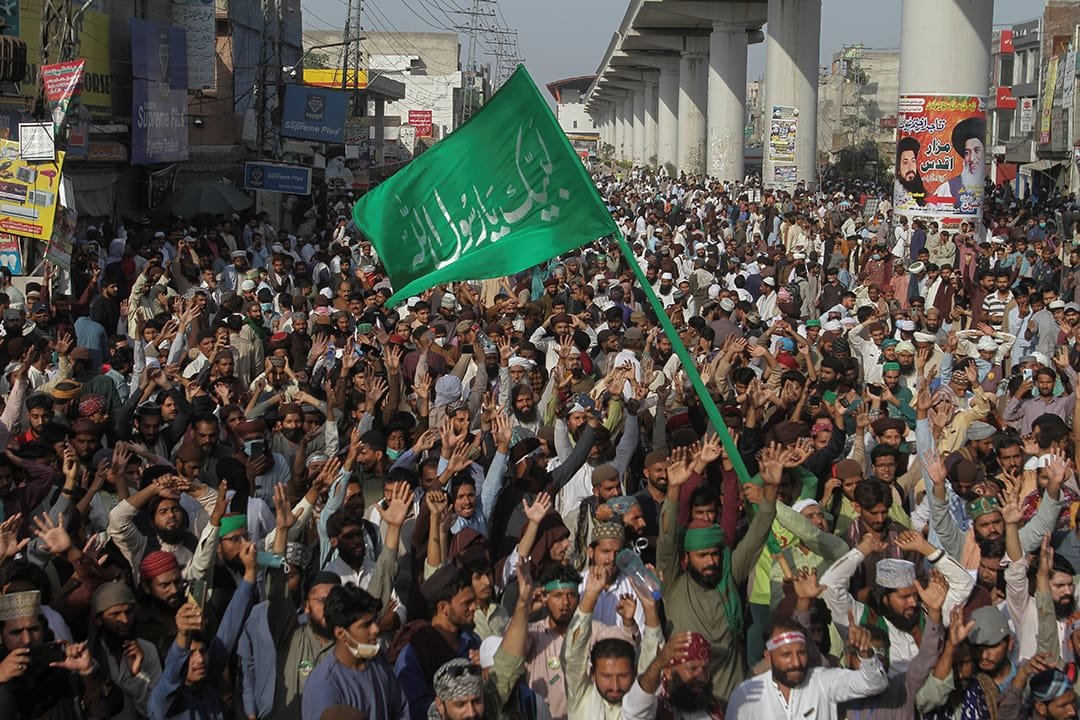25 Killed in Pakistan’s Shia and Sunni Fight as days of violent clashes between Shia and Sunni Muslims over a land dispute escalate in the Kurram district of northwest Pakistan. The deadly conflict, which erupted over the weekend, has left 25 people dead and more than 70 injured, according to local authorities. The violence, stemming from an unresolved land ownership issue, has intensified sectarian tensions in the region, known for its history of violence between the two Muslim sects.
Ongoing Land Dispute Sparks Deadly Clashes
The 25 Killed in Pakistan’s Shia and Sunni Fight underscores the deep-rooted tensions in the Kurram district, where disputes over land often take on a sectarian dimension. The clashes began when members of the Shia and Sunni communities armed themselves and confronted each other over the contested territory. The conflict, which continued for several days, left dozens wounded on both sides, many of whom are now receiving treatment for gunshot and other injuries.
Kurram district has long been a flashpoint for sectarian violence, and local authorities have expressed concerns about the potential for this land dispute to fuel further violence. Extremist groups from both sects are known to have a strong presence in the region, adding to fears that the conflict could spread beyond Kurram.
Efforts to Prevent Widespread Sectarian Conflict
Authorities have been working to prevent the land dispute from spiraling into a broader sectarian war. 25 Killed in Pakistan’s Shia and Sunni Fight has prompted local and provincial officials to intervene, with tribal elders and government representatives attempting to mediate between the two communities.
Barrister Saif Ali, a spokesman for the Khyber Pakhtunkhwa government, stated that peace talks had resulted in a temporary ceasefire. “With the help of tribal elders, both sides have agreed to a ceasefire. We are working hard to defuse the tension and prevent further bloodshed,” said Ali.
Despite these efforts, there are concerns that the ceasefire may be fragile. In a previous incident in July, a similar dispute over land in the same district resulted in 50 deaths and over 200 injuries. Although a ceasefire was brokered at that time, the underlying issues were never fully resolved, leading to the current escalation in violence.
Weapons and External Influence
Aftab Alam, Khyber Pakhtunkhwa’s law minister, has raised concerns about the types of weapons being used in the ongoing conflict. “One side is reportedly using Iranian-made weapons, though this will be investigated later,” Alam said. If confirmed, the use of foreign-made weapons could indicate external influences exacerbating the violence between Pakistan’s Shia and Sunni communities.
This is not the first time that Pakistan’s sectarian violence has attracted international attention. Iran has previously criticized Pakistan for failing to protect its Shia population, especially following the violent incidents in July. The ongoing conflict has once again highlighted the difficulties faced by the Pakistani government in managing sectarian tensions.
Humanitarian Impact and Rights Violations
The 25 Killed in Pakistan’s Shia and Sunni Fight has also raised concerns about the humanitarian impact of the violence. The Human Rights Commission of Pakistan (HRCP) expressed deep concern over the loss of life and the impact on ordinary citizens in Kurram, particularly in the town of Parachinar.
In a statement, the HRCP noted, “The violence has taken a heavy toll on ordinary citizens, whose freedom of movement and access to food and medical supplies have been severely curtailed.” With roads blocked and basic services disrupted, residents are struggling to access essential resources.
The conflict has disrupted daily life, with schools and businesses in the affected areas remaining closed for several days. Local authorities are working to restore order, but the humanitarian crisis in the region continues to worsen as food and medical supplies dwindle.
Sectarian Tensions in Pakistan
Shiite Muslims make up about 15% of Pakistan’s 240 million-strong population, with the majority being Sunni. While the two communities have largely coexisted peacefully across the country, tensions have existed for decades, particularly in regions like Kurram where the Shia community holds a demographic majority.
The 25 Killed in Pakistan’s Shia and Sunni Fight highlights the ongoing challenge Pakistan faces in containing sectarian violence. While local officials and tribal leaders have intervened to mediate ceasefires, these agreements are often short-lived, with the underlying issues remaining unresolved.
Conclusion
The 25 Killed in Pakistan’s Shia and Sunni Fight serves as a stark reminder of the sectarian violence that has plagued Pakistan for decades. With tribal clashes over land disputes evolving into deadly confrontations, the region remains volatile. Authorities are working to mediate and prevent further bloodshed, but tensions continue to simmer. International concerns, particularly from neighboring Iran, have added pressure on Pakistan to find long-term solutions to the sectarian strife that has claimed countless lives in the region.
Stay connected to know more on arcnews.online for global news like 25 Killed in Pakistan’s Shia And Sunni Fight. For videos updates visit our YouTube. Do subscribe to Arcnews to get latest updates directly in your mail box.
Have A Great Day.


